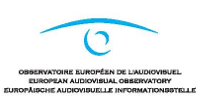Number of pay TV operators in Europe falls 5.8% in 2013
Wednesday, July 16th, 2014
The European Audiovisual Observatory (Observatoire européen de l’audiovisuel) publishes its new statistical Yearbook
STRASBOURG — The European Audiovisual Observatory (Council of Europe, Strasbourg) is publishing today the second volume of the 2013 edition of its Yearbook. Television, cinema, video and on-demand audiovisual services – the pan-European picture. This is the 19th edition of this reference publication and provides figures and analyses on the position of the European audiovisual industry on the global market, on the developments of distribution platforms, television services and on-demand audiovisual services and on the European cinema and physical video market. For the first time, this Yearbook provides an analysis of the position of European fiction in the programming of television channels in the United States.
Among the mass of data contained in this publication (128 tables, 50 graphs), a number of particularly significant statistics may be highlighted:
- The share of the European industry on the global market, calculated on the basis of an analysis of the audiovisual turnover (cinema, television, on-demand services, recorded music, video games, specialised retailing) of the 50 leading groups worldwide, fell from 17.1% in 2009 to 12.5% in 2013, whereas the share of the groups established in the United States rose from 57.7% to 66.4%.
- The revenues of the public service broadcasters in the European Union fell from 33.4 billion euros in 2009 to 32.6 billion in 2012. In 2012, the proportion of public revenues (licence fees, funding from public budgets, contributions, etc.) accounted for 76.2% of these revenues, compared with 21.4% for commercial revenues (advertising, pay-TV fees, sales of rights and products, etc.) and 2.4% for other revenues.
- The turnover of the 19 main European commercial television groups for continued operations has risen by 1% in 2013. The groups that derive the bulk of their revenues from pay-TV posted growth of 1.5%, whereas the revenues of the groups mainly financed by advertising remained stable (-0.1%).
- In 2013, the pay-TV sector had 7,898 operators in 37 countries, which was a significant reduction in their number compared with 2009 (8,381, or -5.8%). Concentration was particularly marked in the cable sector (7,551 operators compared with 8,079) and in the case of mobile TV operators (53 in 2013 compared with 77 in 2009). By contrast, the number of satellite platform operators rose from 73 to 80 and that of pay-DTT platform operators from 25 to 33, despite several business failures, while the number of IPTV platform operators on DSL networks rose from 127 to 181, thus illustrating the growing role of telecommunications operators in the distribution of audiovisual services.
- An analysis of the programming of fiction (films, TV films, series, animation) by 35 television channels in the United States in 2012 shows that the hourly proportion of European fiction was just 8.2%, including 7% for fiction from co-productions or productions co-financed between European producers and producers from other parts of the world (mainly American). By comparison, the proportion of U.S. fiction in the programming of a sample of European channels consistently exceeds 52%.
- 59.5% of VoD services available in the countries of the European Union are controlled by U.S. groups.
In the introduction, André Lange, Head of the Department for Information on Markets and Financing at the European Audiovisual Observatory, emphasises the growing difficulties in collecting relevant data on the audiovisual markets, which mainly result from the major groups’ practices of consolidating their accounts, from the few data supplied by the providers of on-demand audiovisual services and from the increasing complexity of audience measurement at a time when the number of ways of receiving content is rising. Paradoxically, although the development of the internet is boosting the production of data – and leading to a growing number of techniques for the exploitation of “big data” by the major operators – it is becoming more and more difficult to access basic information enabling market developments to be precisely measured.
The Yearbook benefits from close co-operation with numerous national correspondents and various bodies, such as Bureau Van Dijk Electronic Publishing, EBU-M.I.S., the EFARN network, the Eurodata-TV Worldwide service provided by Médiamétrie, EUROSTAT, IHS, the International Video Federation (IVF), Médiasalles, ROVI and Warc.
Latest News
- Sinclair launches 'Broadspan' datacasting platform
- U.S. households report consuming 43.5 hours of video per week
- A1 Group brings Netflix to six more group countries
- Brightcove introduces Smart TV SDKs for Roku, Samsung and LG devices
- Amagi and Argoid AI drive TV program scheduling automation
- KERV and Magnite programmatically deliver AI-powered interactive video ads